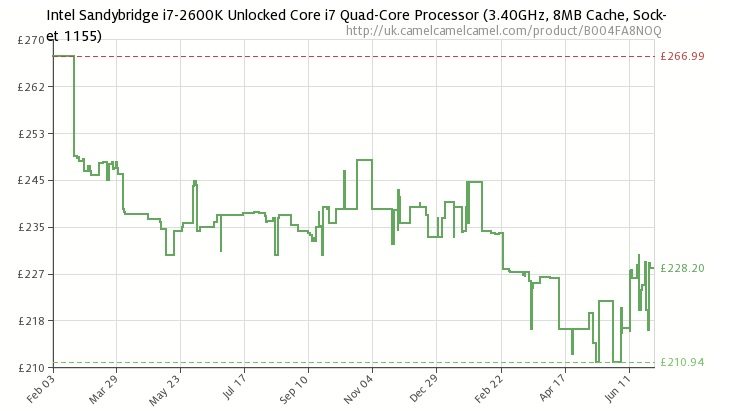The impact of Ivy Bridge on current processor pricing
Ryan Martin / 12 years ago
Sandy Bridge Price Tracking – i7 2700K
Intel released the 2700K as a response to AMD’s Bulldozer release. At £265 when finally released (£287 on pre-order) the 2700K represented the absolute best of the best in terms of Sandy Bridge Core i7 chips. Intel continued to cut the prices of the 2700K in the run up to Ivy Bridge, chopping a large £20 off in March to shift as many possible. Since Ivy Bridge’s launch, the 2700K has only seen a minor price cut which was recently, other than that the chip has maintained a stable price because it can still hold its own against Ivy Bridge and as a result Intel are reluctant to cut the price on something that will sell at the current price.

The 2700K is currently 10% cheaper than at launch.
i7 2600K
The 2600K was the Intel flagship for a very long time. Introduced at the £250 price it was very expensive in relation to its nearly-as-good 2500K counterpart. The 2600K held stable at the £240 price for over a year, rising marginally in price after the release of Bulldozer as demand surged. Ivy Bridge strangely enough had a similar effect. Although Intel slashed prices by around £10 for the launch of Ivy Bridge, soon after the launch passed prices shot back up again as people saw the higher overclocking potential the 2600K possessed.

Currently the 2600K is about 6% cheaper than at launch.
i5 2550K
Like the 2700K the 2550K is a relatively new Sandy Bridge processor. With integrated graphics removed and a slightly higher clock speed than the 2500K it represents the cherry picked Core i5 chips. Intel introduced these chips at a high price tag of around £175. In close run up and following the Ivy Bridge launch prices dipped by a small amount, however much like with the 2600K prices started to climb again as people saw the better overclocking potential of Sandy Bridge.

The 2550K has shed 10% of its price since launch.



















